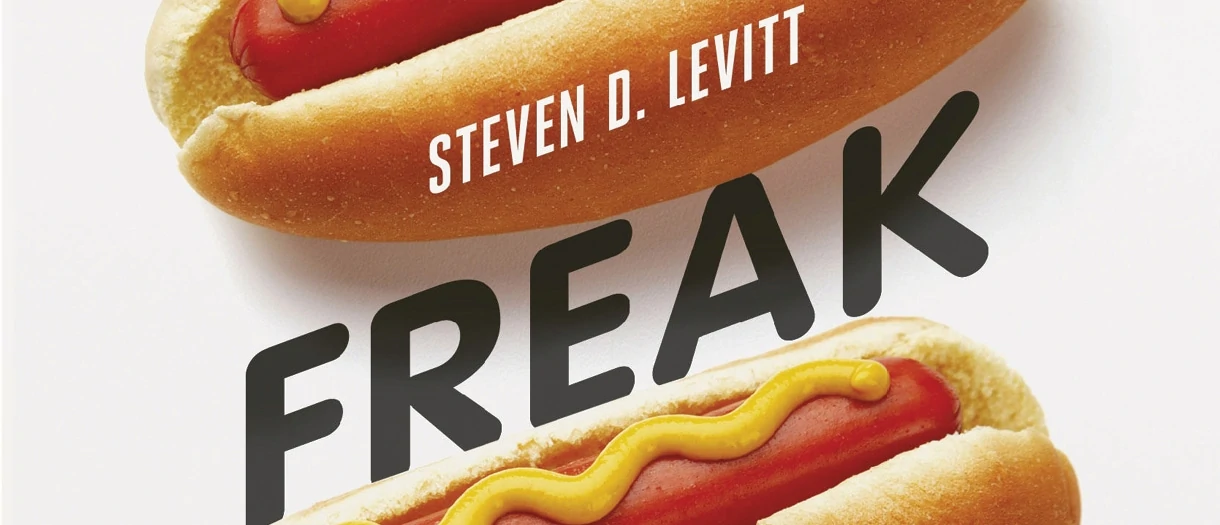Book review: Think Like a Freak

Steven D. Levitt and Stephen J. Dubner tell you how to think better by letting go of your fear of being wrong.
by Steven D. Levitt and Stephen J. Dubner (HarperCollins)
As the old adage goes, insanity is doing the same thing over and over and expecting different results. This is precisely the message behind Think Like a Freak: if you want different results, then you have to think about things differently.
Of course, in the business world, this is often easier said than done. With pressure to make decisions that increase margins and profit, it can be difficult to truly think outside the box—or, at least, to attain buy-in for unproven methodology and new ideas. The “if it ain’t broke, don’t fix it” mentality is muddy water to tread for any company that wants to thrive in difficult economic and increasingly competitive conditions.
The first step, according to Levitt and Dubner, the highly praised authors of Freakonomics and Superfreakonomics, is to think small. Can you increase your company’s annual profit by 10% with one big idea? Maybe, but that’s a big problem to tackle with one idea—and puts a lot of pressure on its success or failure, too. Tackling smaller problems—say, increasing the click-through rate on a weekly e-blast by 5%—gives you a much higher chance of success.
This concept—indeed, the very premise of the book—may seem patronizing, but we so often get lost in the big picture, striving to be “big thinkers,” that we lose track of smaller goals and accomplishments that add up to big success.
But “thinking like a freak” doesn’t just mean starting small.
It also means letting go. One idea that struck a particular chord was Levitt and Dubner’s take on the three hardest words to say in the English language: “I don’t know.” Pressure to look professional and competent in front of peers and employees can often drive us to falsify knowledge and advice, giving unqualified direction rather than admitting that we don’t know the answer. “That’s a shame,” they say, “for until you can admit what you don’t yet know, it’s virtually impossible to learn what you need to.”
Thinking like a freak also means asking the right questions. According to the authors, “It’s incredibly important to properly define the problem—or, better yet, redefine the problem” before committing time and resources to its solution.
As the authors describe it, redefining a problem means freeing yourself of—or refusing—limitations. Levitt and Dubner give the example of a young Japanese man who fell into competitive eating in a bid to make rent. In 2001, Takeru Kobayashi entered the Nathan’s Famous Fourth of July International Hot Dog Eating Contest, held at Coney Island in New York City. The record for the contest stood at 25⅛ hot dogs eaten in 12 minutes. Kobayashi, while training for the event, changed the question that most contestants were asking themselves. Rather than asking, “How do I eat more hot dogs?” he took the approach of “How do I make hot dogs easier to eat?”
The result? Kobayashi revolutionized competitive hot-dog eating, more than doubling the record on his first attempt—and all because he redefined the problem and refused the limitations of the existing record.
For those familiar with Levitt and Dubner’s previous books, this entertaining case study will come as no surprise. Think Like a Freak is packed full of insightful and unusual examples that combine equal parts creativity and logic, framed in a way that is highly readable and entertaining, but, most importantly, thought provoking.
The book, while it relies heavily on its fast pace and humour, is laced with business insights not only on how to think and approach business problems or opportunities more effectively, but also on leveraging new ideas to create better relationships with both your customers and your employees.
Read this book, and let go—admit you don’t know all the answers, challenge yourself to redefine a problem and free yourself of artificial limitations or preconceptions. Go forth and “freak.”